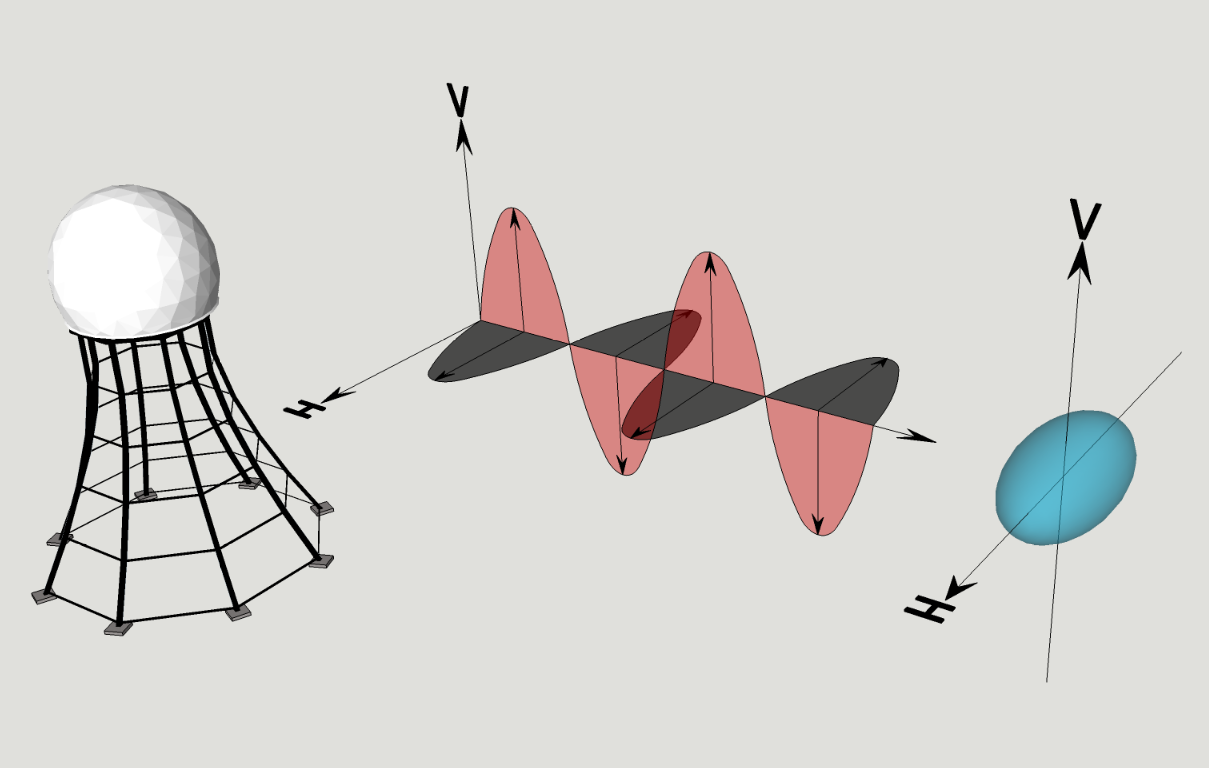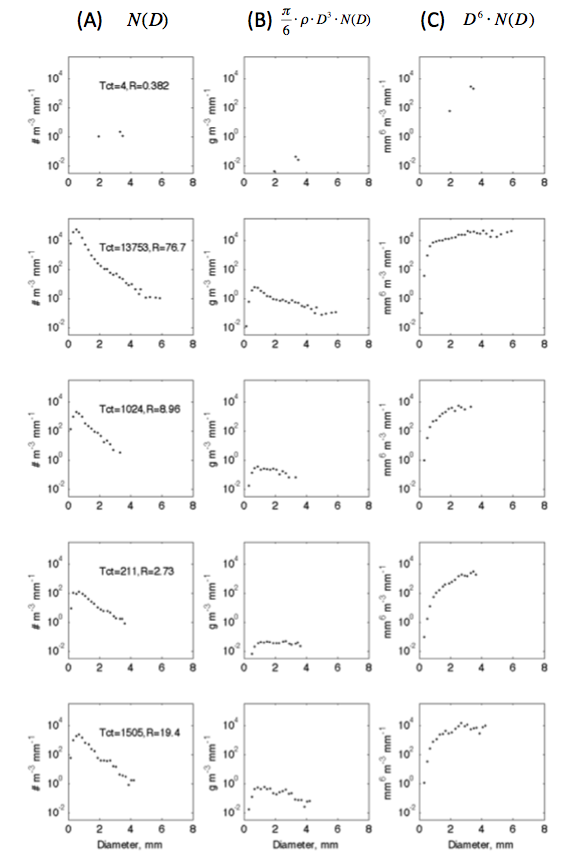Concepts
Dual-polarization Measurements
The following figure illustrates the propagation of polarimetric radar wave and its incidence to a scatterer, e.g., a raindrop. The raindrop scatters the incident wave back to the radar antenna. The scattering wave includes components at both horizontal and vertical polarization, no matter whether the incident wave is horizontally-polarized or vertically-polarized. A single-polarization radar can only receive one polarization (H or V) wave while a polarimetric radar can receive both polarization wave. Compared to single-polarization radar echo, dual-polarization radar echo contain much more information, by which targets' physics can be interpreted better.

Sketch of weatehr radar polarimetry principle. H and V denote the horizontal and vertical axes, respectively.
Equations of Radar Variables

Among above equations, λ denotes the radar wavelength; |K|2 is a dielectric term; K=(ε-1)/(ε+2) and ε is the dielectric constant; D represents the equivalent diameter of the particle; N(D) is the particle size distribution (PSD); Dmax,min indicates the maximum or minimum size of observed particles; fhh,vv is the complex scattering amplitude at the horizontal or vertical polarization; Re indicates the real part of a complex number and Im denotes the imaginary part. Variable fhh,vv includes the direction of scattering, for which π means the back-scattering and 0 denotes the forward-scattering. For radar rain measurements, N(D) specifically indicates the raindrop size distribution (DSD). Accordingly, |K|2 is for the water and has a small variation [Doviak 1993]. For example, |K|2 is about 0.91-0.93 for radar wavelength between 0.01 and 0.1 m.
Calculation of Radar Variables
Raindrop size distribution (DSD)
Raindrop size distribution (DSD) is fundmental for rain microphysics. All the rain varaibles and radar variables can be calculated from a DSD. The following figure shows several types of DSDs observed by a disdrometer.

DSD examples of five typical types (From Cao et al. 2009): a) DSD; b) water content distribution; c) 6th moment of DSD. Rows from top to bottom indicates rain types of "big drop", strong convection, weak convection, stratiform rain, and bimodal DSD, respectiviely.
Raindrop Model
In general, a small size raindrop approximately has a spherical shape while it tends to be oblate with increasing its size. The oblateness of the raindrop accounts for the difference of scattering properties between horizontal and vertical polarization. Therefore, the shape of raindrop is a key factor for the characteristics of polarimetric measurements. Particularly, the simulation of radar measurements depends on a model of raindrop shape. Efforts has been made to investigate the shape of a falling raindrop. Generally, there are three kinds of relations for the raindrop modeling: equilibrium model, oscillation model, and experimental model.

Different raindrop axis ratio relations for the oblate raindrop model. Up-right sub-figure illustrates the axis ratio of an oblate raindrop.
Calculation of Scattering Amplitude
Given a DSD, radar vairables can be calculated if the scattering amplitudes of raindrops are known.
At present, the T-matrix method is the fastest exact technique for the computation of nonspherical
scattering based on a direct solution of Maxwell's equations. It is specifically appropriate for
homogeneous, rotationally symmetric nonspherical particles.
Mishchenko et al. in 1996
have given a complete review of the T-matrix technique. The complex scattering amplitudes of raindrops
are usually pre-computed and stored as a look-up table in terms of different sizes. The look-up table
facilitates the application of T-matirx method.
The look-up tables of calcuated scattering amplitudes can be obtained for study modules following the
link.
Study Module
Objectives
- To understand and apply the physical meaning, formal definition and formulas of polarimetric radar variables (ZH,V, ZDR, ρhv, Kdp, AH,V, and ADP).
- To master the procedure of calculating radar variables with an assumed DSD model and measured DSD data.
- To gain background knowledge about polarimetric radar observables for raindrops.
Procedures

